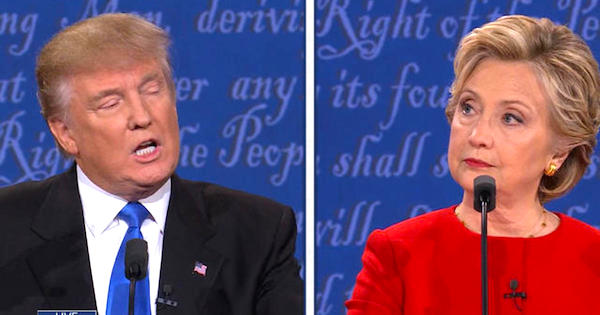When Elections Bring Controversy to Class
It was August, 2016 when I decided to transform my 4th grade social studies curriculum into an election immersion experience with social studies standards baked in.
It was a daunting task, as our two candidates – Donald Trump and Hillary Clinton – were some of the most controversial candidates our country had ever seen.
However, I thought it was necessary that all 65 students in my three social studies classes fully understood the importance of the next three months and how it would impact us as a country. Most of all, I wanted them to get comfortable with disagreements, learning to accept and respect differing opinions.

There is only one way to ensure that something as delicate as political opinion can be openly discussed in a 4th grade classroom. You must set hard boundaries. The first boundary was for me alone. I had to always be impartial, never revealing which candidate I preferred. Then, on the first day of school, I made their boundaries explicitly clear.
- Everyone deserves to be heard and will be listened to
- You must raise your hand to speak
- No one can say anything rude or inappropriate about a candidate
These three rules were paramount for a successful three months of election content. They knew that if they violated one of these rules, they would be sent out of the classroom, unable to continue to participate that day. Because I expected them to behave in a mature way and have civil conversations, they lived up to this expectation.
Learning by Doing
I decided that the best way for them to learn about the election was to not only learn about the candidates, but to put themselves in the running. They planned their own campaign trails, wrote and recorded advertisements, gave interviews, planned fundraisers, researched key issues, debated each other, and finally voted for a president in their class.
Each lesson was mirrored by researching and watching the real candidates in real time. This got them to learn about the election process while getting to know each candidate. It also allowed them to form their own opinions rather than have the opinions of an adult in their life impressed upon them.
I could tell very quickly that my three social studies classes were pretty evenly split on their candidate preference. So, when each lesson started with an example from our candidates, be it an advertisement or a clip from a debate, this is where the three rules were the most in play. We made sure to go over these rules at the beginning of every class.
1. Everyone deserves to be heard and will be listened to
Right away, my students had opinions they wanted to share about each candidate. While playing any video, I made sure to record the candidates’ positions and comments on the board on a t-chart for the students to refer to when forming their opinions. This gave them the confidence to express themselves clearly with evidence. “I agree with Hillary because…” “I like when Donald Trump said ____ because…”
I also made sure that I valued each student’s opinion by giving only positive feedback. “That’s a great point!” “I see what you mean!” This set the precedent that each student’s response would be worth hearing. It also helped maintain my boundary of remaining an impartial facilitator.
As more students felt comfortable sharing their opinions, more students started to feel that same comfort level when responding to what their classmates shared.
2. You must raise your hand to speak
This is a familiar practice in most classrooms, but it is worth repeating when you are trying to hold respectful debates. They all wanted desperately to be heard. They were excited to be learning about something so seemingly adult, and wanted to be a part of the conversation.
If the expectation was made clear that they must raise their hands, they followed it loyally in the hopes that they would be called on. Without it, things could have gotten out of hand quickly. That could have led to students losing their grasp on common courtesy, which is crucial when you are dealing with controversial issues. This rule set the expectation that students would practice self-control for when they spoke, which in turn affected tone, volume, and the language they chose to use.
3. No one can say anything rude or inappropriate about a candidate
This boundary was the one I was the most nervous about. I had high hopes for my students, but they were still only 9 and 10 years old. Could they really have enough maturity to stop themselves from making a joke – or to understand the fine line between polite disagreement and being offensive? The answer to this is yes. Overwhelmingly, yes.
Every teacher has a student or two that will fail to take things seriously. Every teacher also has students that are more mature and insightful. I used those mature students more heavily in the beginning to set the tone of response I was looking for. It did not take long for the rest of the class to follow suit.
Throughout this entire three-month period, I had to send only two students out of the classroom (out of 65 total). Needless to say, these students were not repeat offenders. The kids wanted to be there. They felt important and valued during every discussion. Why would they mess that up?
Finally, it was election night. I woke up at 2 a.m. to our results: Donald Trump had been elected President of the United States. There was a lot of tossing and turning after I learned the verdict, thinking about how we would discuss the results at school that day. I fell back asleep with no plan.
The Day After
That morning I walked down to our gymnasium to pick up my homeroom class as usual. When I walked in, I saw all three classes buzzing about the results. I could see some were upset and not talking much. I also saw some were bursting with excitement, even chanting our new president’s name.
This controversial election had controversial results, and I knew immediately I needed to address this. Rather than have a normal homeroom period in our respective classrooms, I invited the entire 4th grade to come to my room. I let them know that whatever feelings they had about the results were valid and acceptable. I reminded them that we were to respect and consider those feelings in each other.
Finally, I insisted that we must honor the outcome of the election and hope that our new president would do a good job. There was a small and polite classroom discussion after that, but I never needed to remind my students the appropriate way to speak about the election and its conclusion.
Fourth Graders Can Meet the Challenge
This small three-month period was not only one of my biggest successes, but one of the largest lessons I’ve learned as a teacher. My students had things they wanted to say. With hard boundaries and an open mind, I gave them a platform to do that.
Once they felt that they were being taken seriously, they rose to the occasion and truly surprised me. I adamantly believe that in that small amount of time, the climate of our classroom let my students and me learn more about the government, people, the world, and each other.
Emily DeRiso taught fourth grade social studies in Norwood, New Jersey after earning her bachelor’s degree in teacher education at Stockton University. She’s also been a vocal music teacher and a personal chef.


































